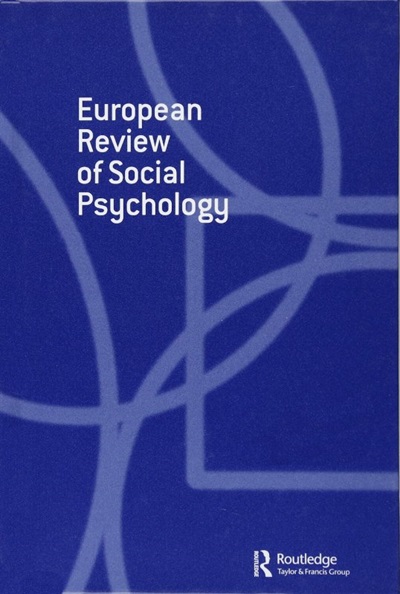Mnemic neglect: Selective amnesia of one’s faults
IF 10.1
2区 心理学
Q1 PSYCHOLOGY, SOCIAL
引用次数: 127
Abstract
ABSTRACT The mnemic neglect model predicts and accounts for selective memory for social feedback as a function of various feedback properties. At the heart of the model is the mnemic neglect effect (MNE), defined as inferior recall for self-threatening feedback compared to other kinds of feedback. The effect emerges both in mundane realism and minimal feedback settings. The effect is presumed to occur in the service of self-protection motivation. Mnemic neglect is pronounced when the feedback poses high levels of self-threat (i.e., can detect accurately one’s weakness), but is lost when self-threat is averted via a self-affirmation manipulation. Mnemic neglect is caused by self-threatening feedback being processed shallowly and in ways that separate it from stored (positive) self-knowledge. The emergence of mnemic neglect is qualified by situational moderators (extent to which one considers their self-conceptions modifiable, receives feedback from a close source, or is primed with improvement-related constructs) and individual differences moderators (anxiety, dysphoria, or defensive pessimism). Finally, the MNE is present in recall, but absent in recognition. Output interference cannot explain this disparity in results, but an inhibitory repression account (e.g., experiential avoidance) can: Repressors show enhanced mnemic neglect. The findings advance research on memory, motivation, and the self.遗忘遗忘:选择性地忘记自己的错误
助记忽略模型预测并解释了社会反馈的选择性记忆作为各种反馈特性的函数。该模型的核心是记忆忽略效应(MNE),定义为与其他类型的反馈相比,自我威胁反馈的回忆较差。这种效果出现在平凡的现实主义和最小的反馈设置中。这种效应被认为是为自我保护动机服务的。当反馈带来高水平的自我威胁时(即,可以准确地检测到一个人的弱点),记忆忽略就会明显,但当通过自我肯定操纵来避免自我威胁时,记忆忽略就会消失。记忆遗忘是由于自我威胁的反馈被肤浅地处理,并以与储存的(积极的)自我认知分离的方式造成的。助记忽视的出现受到情境调节因子(一个人认为他们的自我概念可修改的程度,从接近的来源获得反馈,或被改善相关的构念启动)和个体差异调节因子(焦虑,不安或防御性悲观)的限制。最后,跨国公司存在于回忆中,但不存在于识别中。输出干扰不能解释这种结果上的差异,但抑制性抑制解释(例如,经验回避)可以:抑制因子表现出增强的记忆忽略。这些发现推动了对记忆、动机和自我的研究。
本文章由计算机程序翻译,如有差异,请以英文原文为准。
求助全文
约1分钟内获得全文
求助全文
来源期刊

European Review of Social Psychology
PSYCHOLOGY, SOCIAL-
CiteScore
15.30
自引率
2.80%
发文量
6
期刊介绍:
The "European Review of Social Psychology (ERSP)" is a distinguished international journal that operates under the patronage of the European Association of Social Psychology. It serves as a platform for comprehensive, theory-driven reviews that cover the broad spectrum of social psychology. The journal is open to submissions from authors worldwide and is guided by a prestigious international editorial board.
ERSP is particularly interested in publishing reviews that reflect the author's own research program, as demonstrated by their publications in leading peer-reviewed journals. The journal values theoretical contributions that are grounded in a substantial empirical foundation, situating the research within the broader context of existing literature and offering a synthesis that goes beyond the individual articles.
In addition to these in-depth reviews, ERSP also welcomes conventional reviews and meta-analyses, further enriching the journal's offerings. By focusing on high-quality, evidence-based research, ERSP contributes significantly to the advancement of knowledge in social psychology and fosters a deeper understanding of human social behavior across cultures and societies.
 求助内容:
求助内容: 应助结果提醒方式:
应助结果提醒方式:


